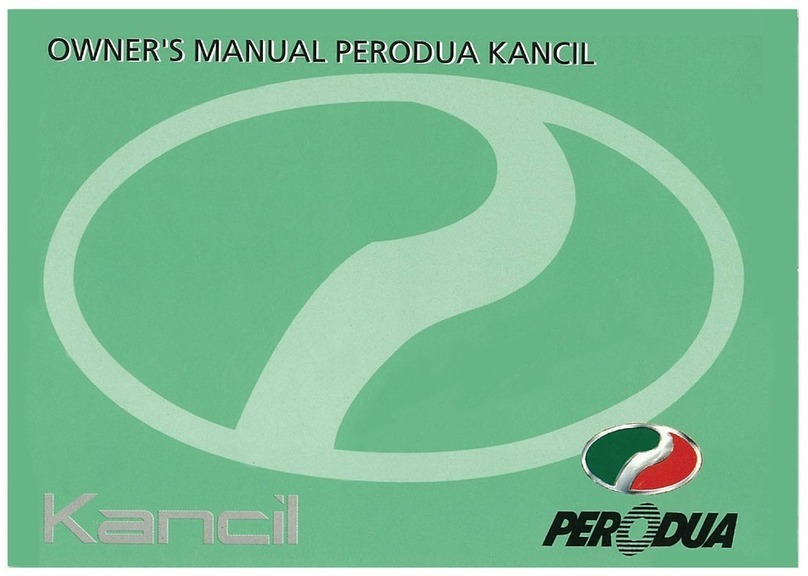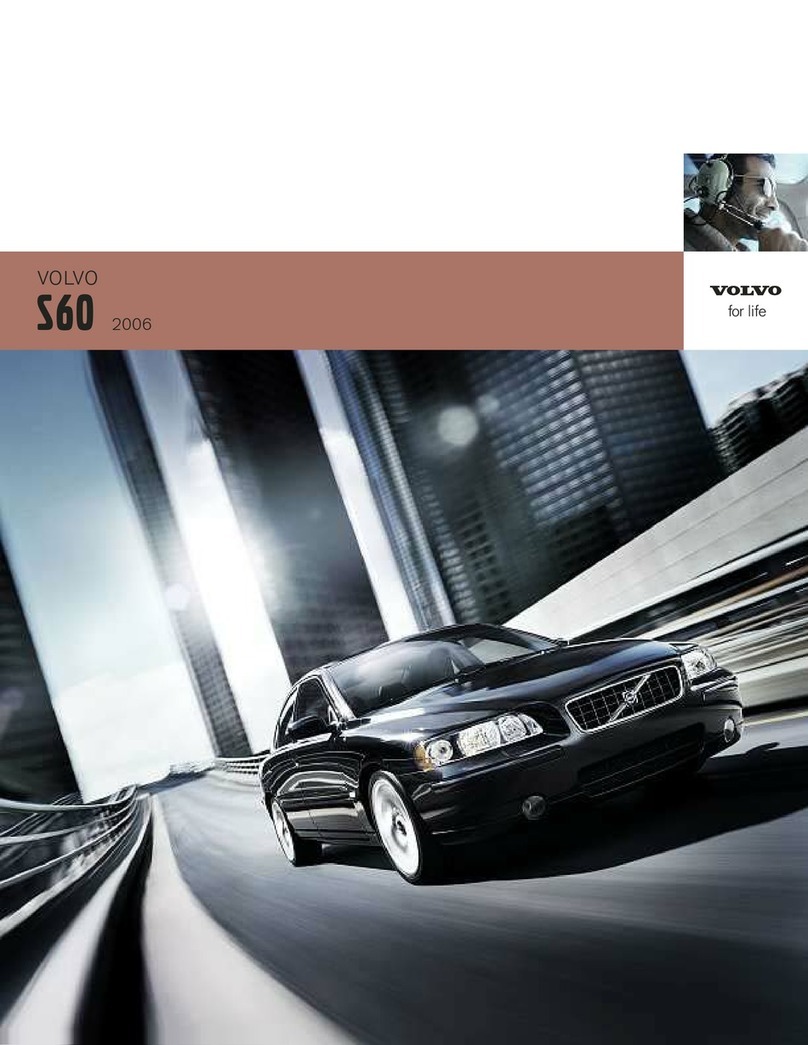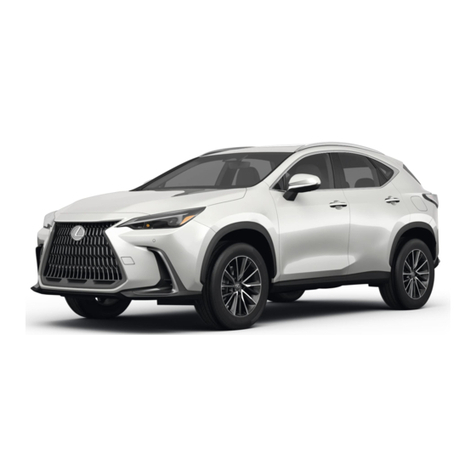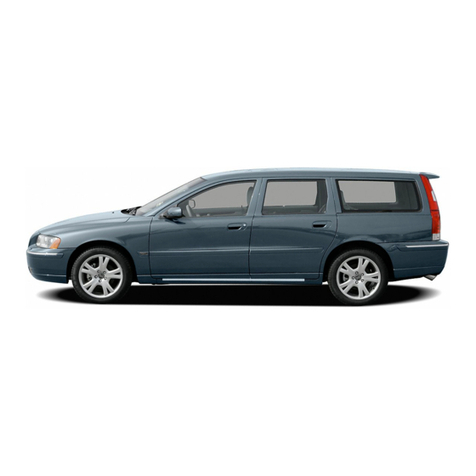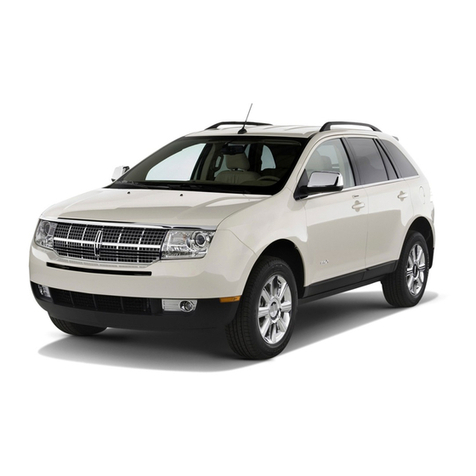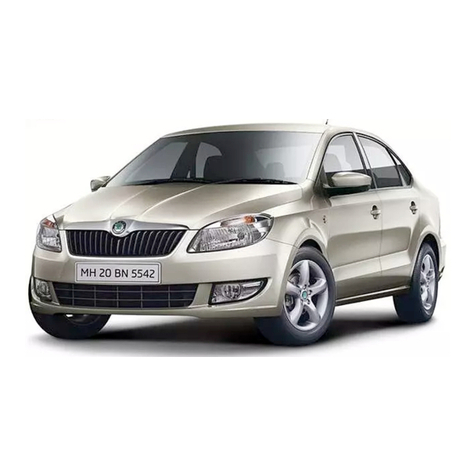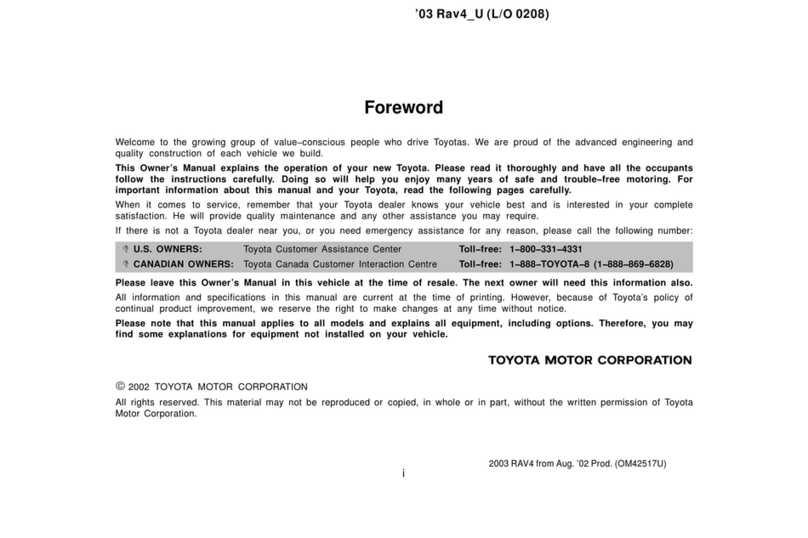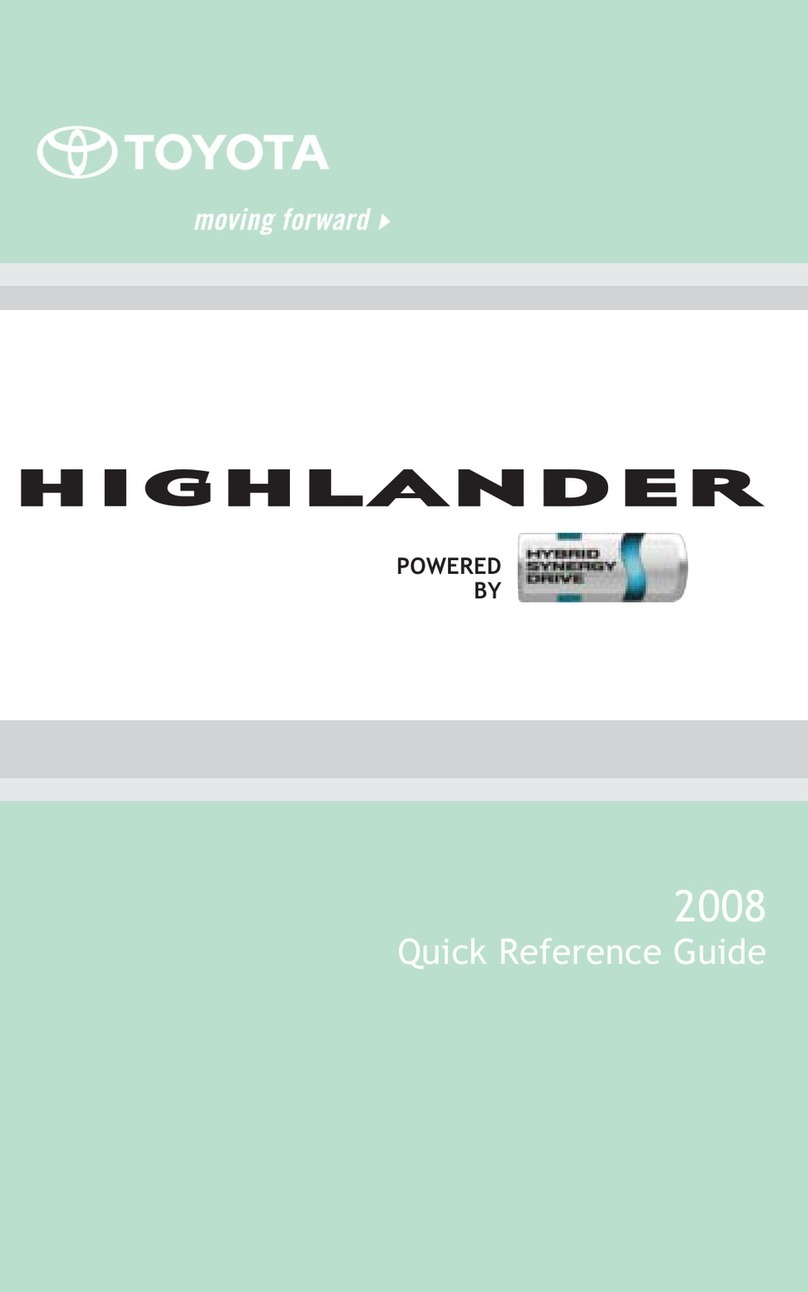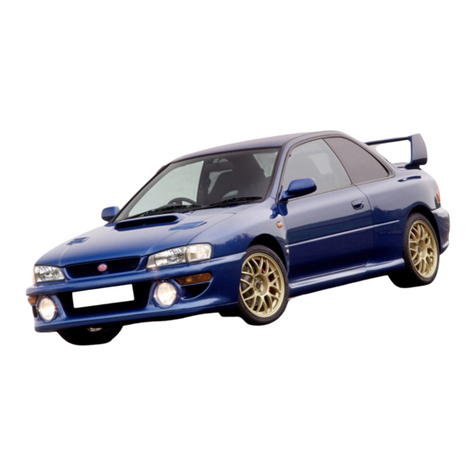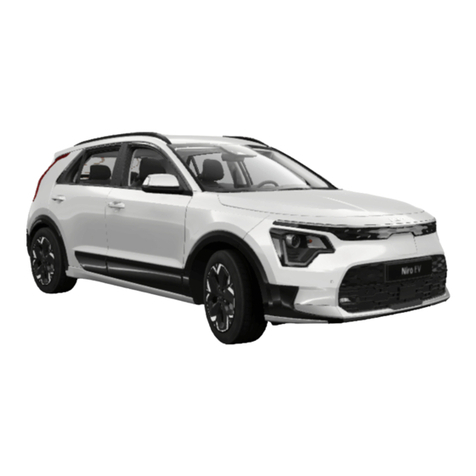Austin-Healey Sprite Mark III User manual

AUSTIN-HEALEY
SPRITE
MARK
III

1
1
j.
1
i
1
~
·
·
,
!'
·
·
·
.
the magazine
for
those
who practise driving as an art
40 Pages *Is. 6d. Monthly
!oubSC1iplion
fales: U.K., £1; U.S.A. and COllado. $3-
elsewhere.
II
5s. or
equj~olrml
Order your copy now. posted direct to you, (rom
"Safely
Fast', British
Motor
Corporation
L~
~lnldOn-on.
Tham... Encland
Read
Safety Fast
Published
by
th
'e
makers
of
your
car
and
puked
with
features
on
•
DRIVING
TECHNIQUE
•
TONING
FOR
PERFORMANCE
•SPORTS
CAR
HISTORY
•
CLUB
NEWS
Ot'flcial Or.ran
or
the Auftin-HerJley
Oull
~
_ _.
__
.._..
_._
.._ ···········
..
············1
·.
· .
·.
·.
·.
i
To
'make the most 1
of Sprite ownership
...
~
l . •
..
_ _
.............
..
....-
.. . _
i-
·
·
·
·
·
·
:'
:.
·
·
·
·
·
·
·
·
·
·
·
·

AUSTIN-HEALEY
SPRITE
(Mark
ill)
(Including Supplement for
Mark
II)
DRIVER'S HANDBOOK
Published by
THE AUSTIN MOTOR CO. LTD.
L
ONG
B
RIDGE,
B~
G
HAM
BOX 41 G.P.O.

2

FOREWORD
IN producing this book the object has been to confine the contents to infer-
. mation essential to the proper running and operation of the vehicle. Never-
theless, the oper
ator
will find all the guidance necessary to maintain the vehicle in
first-class condition
and
ensure trouble-free service. Every vehicle leaving the
Factory is capable of giving absolute satisfaction if the maintenance instructions
detailed in the following pages are carefully carried out. Remember that an
authorized Distributor
/D
ealer is better equipped to provide routine and repair
service than any other opera
tor
; he is at your service and should be consulted
if you encounter trouble. When emergency w
ork
has been undertaken by other
than afranchise holder the vehicle should be submitted to an authorized
Distributor
/De
aler for checking.
All
War
r
ant
y work must be carried out by an authorized Distributor
/D
ealer.
When communicating with your Distributor/Dealer always quote the
car
and
engine numbers; the registration number is of no use and is not required.
For
those wanting information of a more detailed
and
technical nature than is
contained in this
Handbo
ok a Workshop Manual is available at a reasonable
price from your Distributor/Dealer.
IDE
NTIFICA
TIO
Car
number. Stamped on a plate secured to the left-hand inner wheel arch,
under the bonnet.
Engine number. Stamped on a plate secured to the right-hand side
of
the
cylinder block.
Gearbox number. Stamped on the left-hand side
of
the gearbox casing.
Rear axle number. Stamped on the front of the left-h
and
rear axle tube near
the spring seating.
Ignition key number. To reduce the possibility of theft ignition switches on
later cars are not marked with a number. Owners are advised to make a note of
the number stamped on their ignition key in case of future loss.
NOTE.- References to right- or left-hand in this Handbook are made when
viewing the car from the rear.
3

GENERAL DATA
Engine
Engine t
1J:>e
Bore
Stroke
Cubic capacity
Compr
ession ratio
Firing order
Valve rocker clearance (cold)
Idling setting
Oil pressure :
Norm
al (approx.)
Idling (approx.)
Ignition
Sparking plugs
Sparking plug gap
Static ignition timing
Cont
act bre
aker
gap
Fuel System
Carburetters
Carbu
rett
er needles
Spring
Pump
Wheels and Tyres
Wheel size
Tyre size . .
Tyre pressures :
All
conditions :
Fro
nt
Rear
. .
For
sustained speeds in excess
of 80-85 m.p.h.(129-137
km.p.h.):
F
ron
t
Rear
. .
Transmission
Rear axle ratio
Overall gear ratios: First
With
{iC:
~d
synchromesh
Fourth
Reverse
4
WCC (4-cylinder overhead-valve)
2·543 in. (64'58 mm.)
3·296 in. (83'72 mm.)
67 cu. in. (1098 c.c.)
8·9 : I or 8·1 : 1
1
,3
,4
, 2
·012 in. ('305 mm.)
1,000
r.p
.m. (hot)
30 to 60 Ib.jsq. in. (2'1 to 4·2 kg.jcm.")
10 to 25 Ib.jsq. in. ('7 to 1·7 kg.jcrn.")
Champion N5 (14 mm.)
·024 to ·026 in. ('625 to ·660 mm.)
(H.C.) 5° B.T.D.C.
(L.C.) 3° to 5°
B.T
.D.C.
·014 to ·016 in. ('35 to ·40 mm.)
HS2
St
and
ard AN, Weak GG, Rich H6
Blue
S.U. (Electric) type
AUF
3·5D x13
5'2
0-
13
18 lb.jsq, in. (1'27 kg.jcm.")
20 lb.jsq, in. (1'41 kg.jcrn.")
22 Ib./sq. in. (155 kg.jcm.")
24 lb.jsq. in. (1,69 kg.jcrn.")
4·22 : 1
13-504 : 1
8·085 : I
5·726 : 1
4·22 : 1
17·395 : 1

3 ft. 9* in. (1'16 m.) 3 ft. 9* in. (1'16 m.)
3 ft.
9i
in. (1'15 m.) 3ft. 81 in. (1,14 m.)
32 ft. It in. (9'79 m.)
31 ft. 2t in. (9'51 m.)
Parallel to tin. toe-in (0 to 3·2
mm
.)
6ft. 8in. (2'03
m.)
11 ft. 5f in. (3'49m.)
4 ft. 5 in. (1'35 m.)
4ft. Ii in. (1'25 m.)
5 in. (12'7 em.)
Dimensions
Track
:
Front
Rear
Tur
ning circle: Left lock
Right
lock
Fr
ont wheel ali
gnm
e
nt
Wheelbase
Overall length
Overall width
Overall height
G
round
clearance
Wire wheels
GENERAL
D
AT
A
Disc wheels
Weight
Dry weight 1,490 lb. (676 kg.)
Capacities
Fuel t
ank
Engine
sump
(including filter)
Gearbox
. .
Rear axle . .
Cooling system (without
hea
ter)
Heater
6 gallons (
7'2
U.S. gallons, 27·3 litres)
6!
pint
s (7'8 U.S. pints,3-7 litres)
2i
pints (2'7 U.S.
pint
s, 1·3 litres)
It
pint
s (1'8 U.S. pints, ·85 litre)
10
pin
ts (12 U.S.
pint
s, 5·68 litres)
!pint ('6 U.S. pint, ·253 litre)
5

CONTROLS AND INSTRUMENTS
Hand brake
The hand-brake is
of
the pull-up lever type, operating mechanically on the
rear wheels only. To release the h
and
brake, pull it upwards to take the load,
press the ratchet release button located in the end of the lever with the thumb and
push the lever down into the 'off' position. The hand brake is automatically
adjusted at the same time as the foot brake and requires no separate adjustment.
Pedals
The left-hand pedal operates the clutch, the centre pedal the brakes, and the
right-hand pedal the accelerator. Keep the foot clear of the clutch pedal except
when engagement or disengagement of any gear is intended, or when in heavy
traffic.
Dr
iving with the foot resting on the peda l will lead to rapid clutch wear.
Driving controls- right-hand drive
I. Hand brake.
2. Headlight dip switch.
3.
Horn
switch.
4. Clutch pedal.
5. Brake pedal.
6. Accelerator pedal.
7. Direction indicator.
8.
Gear
lever.
Gear lever
The gear positions
are
indicated on the lever knob; make certain that the lever
is in the neutral position before starting the engine. First
and
second gears are
selected by moving the lever to the left, and engaged by moving it forward into
first gear and backwards into second gear. Third and
fourth
gears are selected
by moving the lever to the right through the neutral position until resistance is
felt, then forward into third gear and backwards into fourth gear.
To engage reverse gear move the lever to the right in the neutral position until
resistance is felt, apply further side pressure to overcome the resistance and then
move it backwards to engage the gear. Synchromesh is provided on second,
third, and fourth gears.
Horn
switch
The horn is sounded by pressing the centre disc of the steering-wheel.
6

CONTROLS AND INSTRUMENTS
Ignition and starter switch
The ignition and
starter
are
both
contro
lled by a single switch
operate
d by
aremovable key. To switch on
the
ignition
insert
the
key
and
tu
rn
it in a clock-
wise direction until a slight resistance is felt.
Further
movement in
the
same
direction will
opera
te the
starter
motor. Release the key immediately the engine
starts.
If
the engine fails to s
tart
first time wait until it has come to rest before
using the starter again.
Headlight beam dipping switch
The
headlight main beam dipping switch is located on the
toeboard
to the
left
of
the clutch pedal.
It
is
of
the single-acting repeating type, lowering the
be
ams
on
one
application and raising them on the next. Awarning light on
the face
of
the speedometer will glow when the beams are in the ra ised position.
Driving controls- left-hand drive
I. Hand brake. 5. Brake pedal.
2. Headlight dip switch. 6. Accelerator pedal.
3. Hom switch. 7. Direction indicator.
4. Clutch pedal. 8. Gear lever.
Mixturecontrol
To enrich the mixture and assist star ting when the engine is cold pull out
the kno b marked 'C'.
Th
e con trol, when t
urne
d half a t
urn
clockwise, will hold
in any position, giving a progressively richer mixt
ure
as it is pulled out.
On no account should the engine run for any length of time with the knob
pulled fully out.
It
should be
returne
d to the 'off' posit ion (pushed in) as soon as
possible as
the
engine warms up.
Th
e fi
rst
tin
. (6
mm
.)
minimum
of
movem
ent
op
era
tes only the
throttl
e
c
ontrol.
This initial movement
can
be used to give a fast engineidling speed and
prevent stalling when driving at low speeds before the engine has fully warmed up.
Heater
and demister control
Tills
control
pro
vides a m
eans
of
regulating the heating and demisting
system. Full operating instructions are given on page 11.
7

CONTROLS AND INSTRUMENTS
Ignition and lubrication warning lights
The ignition warning light serves the dual purpose of reminding the driver to
switch off the ignition, and
of
acting as a no-charge indicator. With the ignition
switched on the warning light should only be illuminated when the engine is
not
running, or is running at a very low speed. As the engine speed increases the
light should dim and
th
en go out at a fairly low engine speed.
Directly above the oil pressure/water temperature gauge is the lubrication
warning light. See page 51 for details.
Instruments and switches- right-hand drive
9. Windshield washer.
10. Mixture control.
11. Fuel gauge.
12. Panel light switch.
13. Headlight main-beam warning light.
14. Trip mileage resetting knob.
15. Ignition warning light.
16. Windshield wiper switch.
17. Lighting switch.
18. Lubrication warning light.
1. Speedometer.
2. Trip mileageindicator.
3. Total mileageindicator.
4. Direction indicator warning lights.
5. Tachometer.
6. Ignition and starter switch.
7. Oil pressure and water temperature
gauge.
8. Heater switch.
If
the light fails to go out until higher engine speeds are reached or remains
alight at all times, inspect the dynamo driving belt for correct tension or breakage.
If
the belt is in order the charging system must be overhauled by a Distributor
or
Deal
er.
Lighting switch
A lever-type switch. Move
the
lever downward to the half-way position for
the side and
taillig
hts, and into the fully down positi
on
for the headlights.
Panel light switch
This is a lever-type switch.
The
panel lights will only function when the
sidelights
ar
e switched on.
Fuel gauge
When the ignition is switched on the fuel gauge will indicate the quantity
(a
ppro
x.) of fuel in the tank. An impor
tan
t
note
on filling up with fuel is given
on page 19.
8

CONTROLS AND INSTRUMENTS
Oil pressure and water temperature gauge
The pressure of the oil in the engine lubrication system may rise to over
60 lb.jsq, in. (4'2 kg.jcm.") when the engine is started up from cold. After the
oil has circulated
and
become warm the pressure should drop to between
30 and 60 lb.jsq. in. (2'1 and 4·2 kg.jcm."), with 10 to 25 lb./sq. in. ('7 to 1·7
kg.jcrn,") idling pressure. Should the gauge fail to register any pressure at all,
stop the engine immediately and investigate the cause.
The temperature gauge indicates the temperature of the coolant leaving the
cylinder head. After the initial rise in temperature during the warming up period
any sudden upward change in the reading calls for immediate investigation.
Instruments and switches- left-hand drive
9. Windshield washer.
to. Mixture control.
11. Fuel gauge.
12. Panel light switch.
13. Headlight main-beam warning light.
14. Trip mileage resetting knob.
15. Ignition warning light.
16. Windshield wiper switch.
17. Lighting switch.
J8. Lubrication warning light.
I. Speedometer.
2. Trip mileage indicator.
3. Total mileage indicator.
4. Direction indicator warning lights.
5. Tachometer.
6. Ignition and starter switch.
7. Oil pressure and water temperature
gauge.
8. Heater switch.
Direction indicators
The direction indicator switch is mounted on an arm on the steering-column
below the steering-wheel. The indicators will operate only when the ignition
is switched on, and the indicator warning lights in the instrument panel flash
when they are in use.
Speedometer
In
addition to recording the road speed this instrument also records the trip
and
tot
al distances. The trip recorder enables the length of a particular journey
to be recorded, and can be set to zero by pushing upwards and turning the knob
located beneath the instrument.
9

CONTROLS AND INSTRUMENTS
Tachometer
This instrument indicates the revolutions per minute of the engine, and this
assists the driver to use the most effective engine speed range for maximum
performance in any gear.
Windshield wiper switch
The two windshield wiper blades are operated by a lever-type switch. Flick
down the switch to bring both wiper blades into operation. The blades will park
automatically when the knob is flicked up to switch off.
Windshield washer
To operate the windshield washer press the control knob . When following
other vehicles, particularlyunder dirty road conditions, the washer should be
operated before the wiper blades are set in motion.
In cold weather the reservoir should be filled with a mixture of water and
recommended washer solvent to prevent the water freezing in the reservoir and
on the windshield.
Do not use radiator anti-freeze solution in the windshield-washing equipment.
OPTIONAL EXTRAS
The following items of equipment are available as optional extras:
Wire wheels. Cigar-lighter.
Locking petrol filler cap. Wing mirror.
White-walled tyres.
Hard
top.
Nylon cord tyres. Heater (fresh-air type).
Road Speed tyres. Heater (recirculatory) type.
Heavy-duty (6-ply rating) tyres. Tonneau cover.
Windscreen (laminated type). Twin horns.
Luggage grid. Wheel disc.
Fog lamp. Headlight flasher.
Oil cooler.
10

HEATING AND DEMISTING
The heating and demisting system is designed to provide heated fresh air
to the car interior at floor level and to the windshield for demisting and defrosting.
A valve controlling the flow of
hot
water through the heater unit is fitted at the
rear of the cylinder head. The valve is opened by turning in an anti-clockwise
direction when heating is required or shut off by turning clockwise when the
system is to be used for cool air ventilation.
The air blower switch; turn
the knob in the direction
of
the arrow to switch on the
motor. Switch
off
and pull
the control out to close the
air intake flap
The water valve on the
cylinder block; turn the tap
in the direction
of
the arrow
to shut
off
the flow
of
hot
water 10 the healer
Air is drawn in through a forw
ard
-facing intake, and the ram effect caused
by the car's motion will provide air for the heater's requirements at speeds
above 25 m.p.h. (40 km.p.h.). A blower
motor
is provided for use at lower
speeds or when a greater quantity of air is required. The blower is switched on
by turning the control marked '
R'
on the fascia in a clockwise direction.
Ashut-off valve is incorporated in the air intake to prevent fumes entering the
car in traffic
and
is closed by pulling
out
the
knob
marked 'R '. The blower motor
must be switched off before the valve is closed
and
c
annot
be switched on again
until the valve is returned to the open position.
Two doors located forward, one at each side of the gearbox tunnel, control
distribution of air between screen and car interior. For heating open the doors.
For
defrosting (i.e.
boo
sting flow of hot air to screen) close the
door
s.
11

BODY DETAILS
Bonnetlock
Unlock the bonnet from the inside of the car by pulling the control knob
marked 'B' located below the fascia and on the left-hand side
of
the gearbox
tunnel. Insert a finger under the left-h
and
front edge of the bonnet
and
push
the
safety catch rearwards to release the bonnet and allow it to be lifted into the
open position.
Bonnet lock control and
safety catch
The seat-adjusting lever
Seat adjustment
The driver's and passenger's seats are mounted on slides
and
are easily
adjustable. Push the lever located beneath the front
of
the seat to the left to
unlock the driver's seat slide
and
to the right to unlock the passenger's seat slide;
hold the lever in this position while the seat is readjusted. The locking pin is
spring-loaded
and
will automatically relock the seat slide when the lever is
released.
12

BODY DETAILS
Doors
Both doors are provided with door-pulls.
A window regulator handle is fitted to the inside of each door.
A draughtproof ventilator panel adjacent to each window may be opened
after releasing the catch.
Luggage compartment
Turn
the handle in an anti-clockwise direction to release the catch. When
closed, turn the handle clockwise to secure.
The lid can be locked in the closed position with the key provided.
Turn the hal/die anti-clock-
wise to open the boot lid
The external and internal
door locks
Door locks
Both doors may be locked from the outside with the ignition key. The pas-
senger door may alternatively be locked from inside the
car
.
To lock the doors turn the key clockwise; to unlock the doors turn the key
anti-clockwise.
After locking or unlocking the doors return the key to the vertical position
and withdraw it.
The passenger d
oor
may be locked from inside the car by turning the locking
knob downwards. T
urn
the knob upwards to unlock the door.
13

BODY DETAILS
Hood
Erecting the hood
Remove the hood from its stowed position (see page 16).
Erect the collapsible frame and pull the front stick forward; leave the rear
stick in the collapsed position until the canopy is fitted.
Place the ends of the frame in the support sockets that are fitted one to each
rear quarter panel. The long stick faces forward.
The hood sticks fitted and
erected
E
xtend
the rear stick and
ensure that the links (one
shown arrowed) pass over
their centres, inset is the
windshield toggle catches
Unfold the hood over the frame and engage the two locating sockets on the
lower rear edge of the canopy with the retaining plates on the rear tonneau
panel. Engage the fasteners around the rear of the canopy. Secure the hood
header rail to the windshield frame with the toggle lever catches and the two
fastener assemblies.
Extend the rear stick to tension the canopy and ensure that the connecting
Iinks pass over their centres.
14

BODY DETAILS
Removing the hood
Unlock the over-centre links on the rear stick to slacken the canopy.
Undo
the fasteners and release the toggle lever catches on the windshield. Release all
fasteners around the rear of the hood. Slide the
rea
r
hood
rail backwards clear
of the two slotted fasteners on the tonneau panel, and lift the hood from the
frame.
Fold the quarter-lights in-
wards, folding on a line
between thequarter-light and
back-light
Finally, 1'0 1/ the hood as
shown for storage
NO
TE.-
It
is most import
ant
that the instructions given should be followed
when folding and stowing the hood in order to avoid damage to the quarter- and
back-lights. Never fold the hood when it is wet or damp.
Folding the hood
Folding the hood
cor
rectly is of utmost importance; lay the hood on a flat
surface with the lining upw
ard
s.
Fo
ld the hood in the way shown in the illustra-
tion and then roll it up carefully, avoiding kinking.
15

BODY DETAILS
Stowing the hood and hood sticks
Withdraw the frame from the support sockets, fold the sticks and separate
the two halves of the frame. Place the canopy and the frame in their respective
stowage bags
and
stow in the luggage compartment.
The hood may suffer damage
if
stowed without the protection of stowage bag.
The hood and hood sticks
stowed away in the luggage
compartment
To
nneau
cover
The location of the tonneau cover on the rear body decking is the same as that
of the hood. The front section islocated on the press studs across the fascia. When
driving with only the tonneau cover fitted, the front section can be detached from
the top of the fascia and is located on the rear axle body scuttle.
16

COOLING SYSTEM
A pressurized cooling system is used on this vehicle and the pressure must be
released gradually when removing the radiator filler cap while the system is hot.
It
is advisable to protect the hands against escaping steam
and
then
turn
the cap
slowly anti-clockwise until the resistance of the safety stop is felt. Leave the cap
in this position until all pressure is released. Press the cap downwards against
the spring to clear the safety stops and continue turning until it can be lifted off.
The radiator drain tap on the
left-hand side of the radiator
bottom tank. Turn in the
direction
of
the arrow to open
The cylinder block drain tap
is on the left-handside
of
the
block at the rear. Turn in the
direction
of
the arrowto open
Frost precautions
Water, when it freezes, expands, and if precautions are not taken there is
considerable risk of bursting the radiator, cylinder block, or heater (where fitted).
Such damage may be avoided by drain ing the cooling system when the vehicle
is left for any length of time in frosty weather, or by adding anti-freeze to the
water.
Warning
When a heater unit is fitted an anti-freeze solution must be added in the cooling
system since no provision is made for draining the heater.
Do not use radiator anti-freeze solution in the windshield-washing equipment.
17

COOLING SYSTEM
Anti-freeze solutions
Anti-freeze can remain in the cooling system for two years provided that the
specific gravity of the coolant is checked periodically
and
anti-freeze added as
necessary. This operation should be carried out by an authorized Distributor
or Dealer.
After the second winter the system should be drained and refilled with fresh
water, and the appropriate amount of anti-freeze added when required.
Only anti-freeze of the ethylene glycol or glycerine type is suitable for use in
the cooling system. We recommend owners to use Bluecol Anti-freeze (non-
corrosive) in order to protect the cooling system during frosty weather and
reduce corrosion to a minimum. We also approve the use of any anti-freeze
which conforms to Specification B.S.3151 or B.S.3152.
The correct quantities of anti-freeze for different degrees of frost protection
are:
---
Absolute Commences
safe limit freezing at Solution Quantity
of
anti-freeze required
oC. OF. 0c. o f . (%)
- 19 - 3 - 9 16 20 2 pts. (2'4 U.S. pts., 1·1 litres)
- 26 - 15 - 13 9 25 2! pts. (3'0 U.S. pts., 1-42Iitres)
- 33 - 28 - 16 3 30 3 pts. (3,6 U.S. pts., 1·
71
litres)
II
Before adding anti-freeze mixture to the radiator it is advisable to clean
out the cooling system thoroughly by flushing
out
the passages with a hose
inserted in the filler cap while keeping the drain taps open.
Only top up when the cooling system is at its normal running temperature,
in order to avoid losing anti-freeze due to expansion.
Make sure t
hat
the cooling system is water-tight, examine all joints, and
replace any defective rubber hose with new.
Draining the cooling system
There are two drain taps provided, one on the radiator bottom tank and the
other on the left-hand side of the cylinder block. To drain the coolant stand the
car on level ground and open
both
taps.
When draining in freezing weather, do so when the engine is hot. Run the
engine slowly for one minute when the water has ceased flowing to clear any
water from the
pump
and other places where it might collect. Finally, leave a
reminder on the vehicle to the effect that the cooling system has been drained .
If
the system contains anti-freeze remember to collect it in a clean container
for future use.
Filling the cooling system
To avoid wastage by overflow add
just
sufficient cool
ant
to cover the bottom
of the header tank.
Run
the engine until it is
hot
and add sufficient coolant
to bring the surface to the level of the indicator positioned inside the header
tank below the filler neck.
18
Other Austin-Healey Automobile manuals
